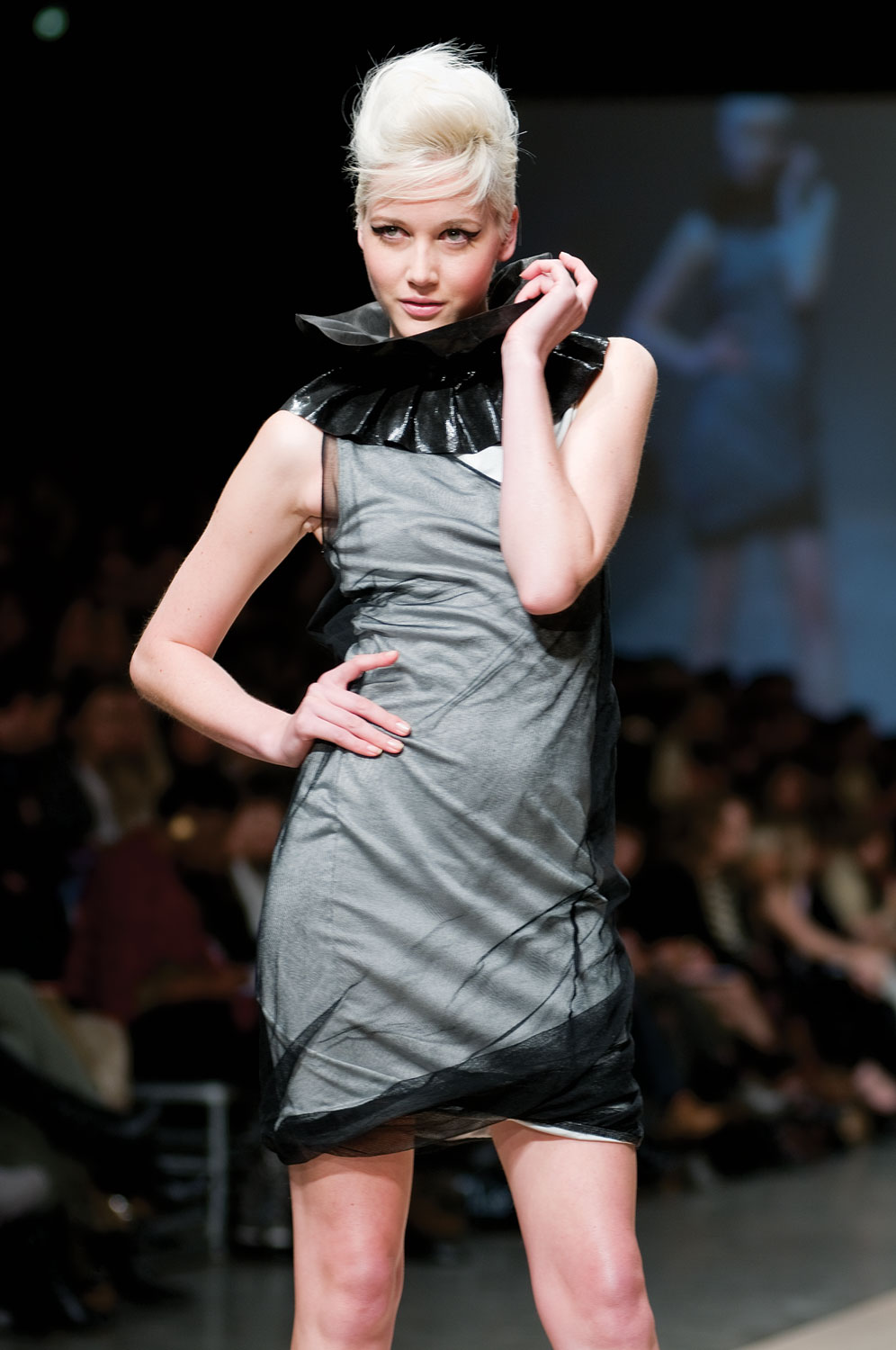Cristina De Miranda
Contributor
“Ladies and gentlemen, the doors to the runway room are now open.” Segregated lines allotted to the media, sponsor guests and VIPs streamed into the Heritage Court showroom for the greatly anticipated Thomas show at this year’s LG Toronto Fashion Week. Every waiting face was cast aglow in blue runway lights.
I sat uncomfortably on metal bleachers while the “big names” like Derick Chetty, Toronto Star fashion reporter, and Glen Baxter, In Fashion host, sat in their own chairs bordering the catwalk. A count down announced the start and the lights dimmed, camera flashes sprinkling the darkness.
My synopsis: Fashion Week was bold but not experimental, pretty but not imaginative. “Safety first” seemed to be the guiding principle for many of the collections I examined.
Perhaps my expectations – I was looking forward to revolutionary clothing – were too outlandish. Still, the clothes that graced the catwalk, the sculpted bodies and unemotional faces, failed to evoke anything in me.
Fashion has served as a source of social commentary for decades, beginning most memorably in the ’20s with the emancipation of the “statuesque” woman, but my experience left me unsure about the defining element of 2011’s spring- summer, or rather, of Toronto fashion.
I pondered this as I walked into a lounge area decorated with bone white furniture, surrounded by clover hedges, and succumbed to a glass of red wine. Off to my right were pink and blue life-sized product boxes of Barbie and Ken, just below a quick history lesson entitled “The Original ‘It’ Couple.” Sadly, my courtship with fashion was meandering into boring; I needed more than good looks to keep me interested – sorry Ken!
Collections by Jules Power, Angela Chen and Pink Tartan boasted wearable items, though they lacked drama. Sylvia Defend, York’s costuming course professor, summarized the factors these designers had to consider: “I think it’s great when people push the boundaries, push the limits, take clothing to a different realm, but, in terms of wearability, is it practical?”
I agree fashion is a dual-purpose art in that it must satisfy both functionality and aesthetic appeal, but I question why Fashion Week isn’t used as more of an experimental arena to showcase clothing of un- precedented innovation and creativity. If the laws of functionality cannot be abandoned on the runway, then where can they be?
Among the few designers who took an experimental approach to Fashion Week was Baby Steinberg, whose conceptual designs worked as a commentary on eco-friendliness. The ingenuity she put into creating artwork with trash from our ever-growing landfills was imaginative and served good cause.
Next to appear in the showroom was Lauren Bagliore’s collection; I took a media-reserved seat and hoped I’d be enamored with a storyline and provoked by absurdity.
The show’s orchestra began to play, but quickly faded into a bass line and synthesized sounds. The models walked out, their backs curved to find their centres of gravity in six-inch heels, clad in black and white – and, disappointingly, numerous combinations of the two.
My hopes for Toronto’s Fashion Week were not helped, I suppose, by my natural comparisons to designs executed by Paris, Milan or New York fashion houses. Whether this is a fair comparison or not, if Toronto wants to become a power-house in the fashion industry, the pressure to create rather than re-create must be increased.
All in all, the hype for Toronto Fashion Week outweighed my experience. I appreciate the hard work designers do and sympathize with the difficulties of creating in a world where everything seems to have been done; however, the small things designers do well are unrewarding if they are surrounded by more subtleties. Overall, this Fashion Week lacked risks and visual stimulation.
At the end of the week, I followed the sound of heels onto the homebound streetcar and tried to recall my favourite piece.





